Most people are familiar with the twelve signs of the zodiac, but there may be one that you’ve never heard of – Ophiuchus. This mysterious and lesser-known constellation has sparked curiosity and controversy. Some claim that Ophiuchus is a new zodiac sign, while others believe that it has special traits and affects horoscopes. In this article, we will delve into the world of Ophiuchus, dispelling common myths and misconceptions, exploring its historical significance, and understanding its place in the astronomical and astrological realms. Prepare to have your curiosity piqued as we unravel the enigma of Ophiuchus and shed light on this fascinating constellation.
What is Ophiuchus?
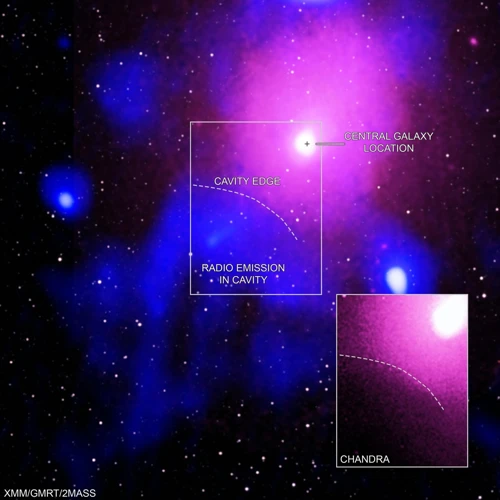
Ophiuchus, also known as the ‘Serpent Bearer,’ is a constellation that lies between Scorpio and Sagittarius in the zodiac belt. It is often referred to as the ’13th zodiac sign,’ but this designation is not entirely accurate. Ophiuchus is not officially recognized as a zodiac sign in Western astrology, which is based on the twelve divisions of the ecliptic. However, in sidereal astrology and Hindu astrology, Ophiuchus is indeed acknowledged as a zodiac sign. The constellation itself is depicted as a man holding a serpent, representing the mythological figure of Asclepius, the ancient Greek god of medicine and healing. Ophiuchus is associated with the healing arts and is said to possess attributes of wisdom, intuition, and knowledge. Despite its lesser-known status in Western astrology, Ophiuchus has gained popularity in recent years, as people are drawn to its intriguing mystique and explore its potential influence on horoscopes and personality traits. To unravel the mysteries of Ophiuchus and understand its significance in astrology, we must delve into its historical origins, astronomical facts, and scientific explanations surrounding this enigmatic constellation. For a deeper dive into the forgotten zodiac sign, you can explore our article “Unraveling the Mysteries of Ophiuchus: The Forgotten Zodiac Sign”.
Debunking Common Myths

Myth 1: Ophiuchus is a new zodiac sign. This is a common misconception that has caused confusion among astrology enthusiasts. Ophiuchus has been part of constellation lore for centuries, but it is not officially recognized as a zodiac sign in Western astrology, which follows the twelve zodiac signs along the ecliptic. Myth 2: Ophiuchus changed the dates of other zodiac signs. This is another popular myth that has circulated in recent years. The addition of Ophiuchus does not alter the dates assigned to the other zodiac signs. The existing zodiac sign dates remain the same. Myth 3: Ophiuchus has special traits and personality characteristics. While Ophiuchus has a fascinating mythological background, it does not have unique traits or personality characteristics assigned to it in mainstream astrology. Myth 4: Ophiuchus affects horoscopes and astrology predictions. There is no scientific evidence to support the claim that Ophiuchus has any influence on horoscopes or astrology predictions. It is important to separate fact from fiction and debunk these common myths surrounding Ophiuchus. To delve deeper into the controversial topic of the 13th zodiac sign, you can explore our article “The Ophiuchus Enigma: The Controversial 13th Zodiac”.
Myth: Ophiuchus is a new zodiac sign
One common myth surrounding Ophiuchus is that it is a new zodiac sign. However, this is not the case. The zodiac we are familiar with today has existed for thousands of years and is based on ancient Babylonian astrology. The twelve zodiac signs were established around 600 BCE and have remained unchanged since then. Ophiuchus, on the other hand, has been known to astronomers for centuries but was not included in the zodiac system. The idea of Ophiuchus as a zodiac sign gained traction in recent years through social media and popular culture, leading to the misconception that it is a new addition. In reality, Ophiuchus has always been present in the night sky but has not been officially recognized as a zodiac sign in Western astrology. To learn more about the origins and significance of Ophiuchus in astrology, you can refer to our article “Ophiuchus: Zodiac Sign Origins and Significance in Astrology”.
Myth: Ophiuchus changed the dates of other zodiac signs
The myth that Ophiuchus changed the dates of other zodiac signs is a common misconception that has caused confusion among astrology enthusiasts. It is important to clarify that Ophiuchus did not cause any alteration to the dates assigned to the twelve traditional zodiac signs. The dates associated with each zodiac sign are determined by the ecliptic, the apparent path of the Sun as it moves across the sky throughout the year. These dates have remained consistent and unchanged over time. Ophiuchus, being situated between Scorpio and Sagittarius, does not disrupt or affect the established dates of the other zodiac signs. Each zodiac sign still has its designated time frame, from Aries starting on or around March 21st to Pisces ending on or around February 19th. While Ophiuchus may be an intriguing celestial presence, it does not alter the existing zodiac calendar and the timing of each zodiac sign.
Myth: Ophiuchus has special traits and personality characteristics
The idea that Ophiuchus has special traits and personality characteristics is a common myth that has circulated in recent years. While Ophiuchus does have symbolism associated with healing and wisdom, the notion that individuals born under this sign possess specific traits is not backed by scientific evidence or widely accepted astrology practices. In Western astrology, the personality traits and characteristics assigned to individuals are based on the interaction between the sun, moon, and other planets at the time of their birth, which are determined by the twelve traditional zodiac signs. As Ophiuchus is not officially recognized in Western astrology, there are no established personality traits linked exclusively to this constellation. It’s important to remember that astrology is a complex and multi-faceted system, and individual traits are not solely determined by one’s sun sign alone. Personalities are shaped by numerous factors, including genetics, upbringing, experiences, and personal choices. While Ophiuchus may have certain associations and symbolism, it’s crucial to approach it with a nuanced understanding rather than attributing specific and predetermined personality traits to those born under this sign.
Myth: Ophiuchus affects horoscopes and astrology predictions
The myth that Ophiuchus affects horoscopes and astrology predictions has been a topic of debate among astrology enthusiasts. However, it is important to clarify that Ophiuchus does not have a direct influence on traditional astrology and its interpretations. In the Western astrological system, which is based on the twelve zodiac signs, Ophiuchus is not included as an official sign. The zodiac signs are determined by the position of the Sun at the time of an individual’s birth, and the twelve signs have specific traits and characteristics attributed to them.
While Ophiuchus may not directly impact horoscopes and astrology predictions, there are astrologers who work with the sidereal zodiac, which includes Ophiuchus as a thirteenth sign. In sidereal astrology, the zodiac signs align with the actual constellations, including Ophiuchus. However, this system is not as widely practiced or recognized in Western astrology.
It is also worth noting that astrology is a complex and multifaceted discipline, with many factors and variables influencing a person’s birth chart and horoscope. The positions of the planets, houses, and aspects between celestial bodies all play a role in astrology readings. Ophiuchus, as a constellation, may have its own mythological and symbolic significance, but its direct impact on astrology predictions remains a matter of personal interpretation and belief.
It is essential to approach astrology with an open mind and understand that it encompasses a broad spectrum of perspectives and practices. While some may find resonance with the idea of Ophiuchus influencing their horoscope, others may find greater connection within the traditional twelve zodiac signs. Ultimately, astrology is a tool for self-reflection and personal growth, and individuals should explore and embrace the aspects that resonate with them most.
The Origin of Ophiuchus
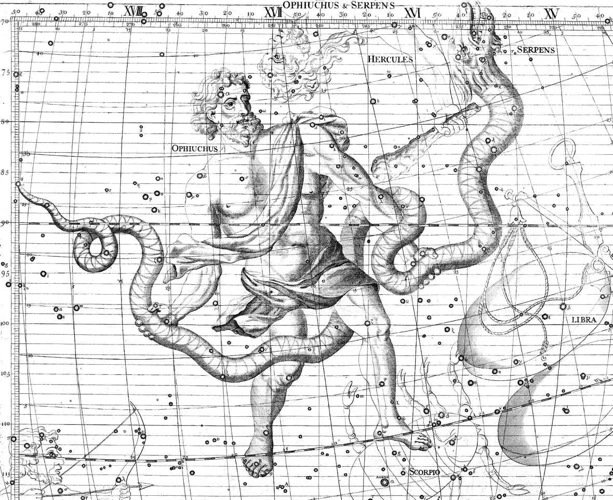
The origin of Ophiuchus can be traced back to ancient Greek mythology. The constellation is associated with the figure of Asclepius, a skilled healer and physician. According to legend, Asclepius had the ability to resurrect the dead, which caught the attention of Hades, the god of the underworld. Hades complained to his brother Zeus, who then decided to strike Asclepius down with a lightning bolt, fearing that his powers would disrupt the natural order of life and death. As a tribute to his noble deeds, Zeus immortalized Asclepius by placing him in the heavens as the constellation Ophiuchus.
In addition to its mythical origins, Ophiuchus has historical significance in the field of astrology. The ancient Egyptians, Babylonians, and Greeks all recognized Ophiuchus as a constellation of importance. The Egyptians associated it with Imhotep, a high priest, physician, and architect who was revered as a god of healing. The Babylonians considered Ophiuchus as part of their zodiac system and included it in their celestial observations. The Greeks, influenced by Babylonian astronomy, incorporated Ophiuchus into their zodiac but eventually excluded it from the standard twelve signs that we are familiar with today.
It is important to note that the Western zodiac, as we know it, is based on the seasons and the tilt of the Earth’s axis, with each sign representing a specific period of time during the year. Ophiuchus, being located within the zodiac belt, has had an impact on the overall understanding of astrology but is not officially recognized as a zodiac sign in Western astrology. Nevertheless, its historical origins and cultural significance make Ophiuchus a subject of intrigue and fascination for astrology enthusiasts and those seeking to explore the depths of the zodiac system.
Historical Significance
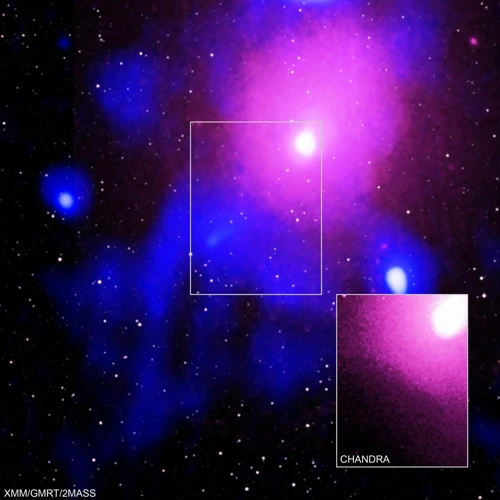
The historical significance of Ophiuchus dates back to ancient times. The constellation has roots in Greek mythology, where it is associated with the mythical figure of Asclepius, the god of medicine and healing. Asclepius was believed to possess incredible healing powers and could even bring the dead back to life. The importance of Asclepius and his connection to Ophiuchus is evident in the symbol of the Rod of Asclepius, which is a staff entwined with a serpent, now widely recognized as the symbol of medicine. Ophiuchus was also regarded as the thirteenth sign by Babylonian astronomers, who divided the ecliptic into twelve equal parts to create the zodiac we know today. However, due to various historical developments, including the influence of Hellenistic astrology, Ophiuchus was not included in the Western zodiac system. Despite this omission, Ophiuchus continues to captivate many with its rich historical significance and its representation of healing and wisdom. Explore more about the controversial history of Ophiuchus in our article “The Ophiuchus Enigma: Exploring the Controversial 13th Zodiac”.
Astronomical Facts
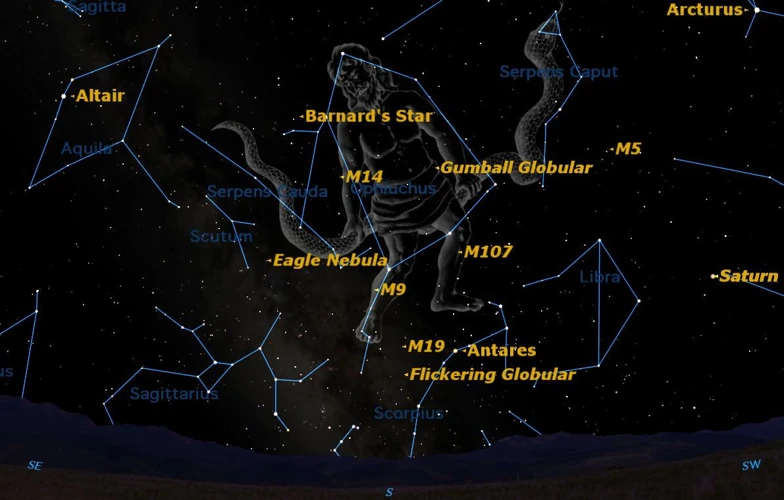
When considering the astronomical facts about Ophiuchus, there are a few key aspects to explore. Firstly, Ophiuchus lies along the celestial equator, making it visible from both the Northern and Southern Hemispheres. It is positioned between Scorpio and Sagittarius in the zodiac belt, traversing an area of the sky that is approximately 948 square degrees in size. The constellation is home to several notable stars, including Rasalhague (Alpha Ophiuchi), which is one of the brightest stars in the constellation. In addition to individual stars, Ophiuchus is also home to various deep-sky objects, such as globular clusters and nebulae. These features make Ophiuchus an intriguing constellation for astronomers and stargazers alike, offering a wealth of celestial wonders to explore.
Ophiuchus in the zodiac belt
Ophiuchus occupies a unique position within the zodiac belt, situated between the constellations of Scorpio and Sagittarius. While the zodiac belt traditionally consists of twelve constellations that correspond to the twelve zodiac signs, Ophiuchus is often considered the “13th sign.” However, it is important to note that in Western astrology, the zodiac is divided into twelve equal parts, with each sign representing a specific time frame. Ophiuchus, although not officially recognized as a zodiac sign in Western astrology, does fall within the area of the zodiac belt. Its position in close proximity to Scorpio and Sagittarius has caused some to speculate on its potential influence and significance in the astrological system. As we explore further, we will uncover the historical, astronomical, and scientific aspects surrounding Ophiuchus, shedding light on its place in the zodiac belt and its relationship with the other constellations.
The Ophiuchus constellation
The Ophiuchus constellation, also known as the Serpent-Bearer, is a prominent feature of the night sky. It is situated near the celestial equator, making it visible from many parts of the world. The constellation is depicted as a man holding a serpent, representing the figure of Asclepius, the Greek god of medicine and healing. Ophiuchus is located between the constellations of Scorpio and Sagittarius and is often associated with the astrological sign attributed to the same name. The constellation is home to several notable stars, including Rasalhague (Alpha Ophiuchi), which is the brightest star in Ophiuchus. Another significant star within the constellation is Barnard’s Star, which is one of the closest known stars to our solar system. Ophiuchus also contains various deep-sky objects, such as the Ophiuchus Cluster, a rich cluster of galaxies. This constellation has captivated astronomers and stargazers alike due to its intriguing mythology and unique placement in the zodiac belt. The Ophiuchus constellation continues to be a fascinating subject of study and observation in the field of astronomy.
The relationship between Ophiuchus and other constellations
The relationship between Ophiuchus and other constellations in the night sky is both fascinating and complex. As an intermediate constellation, Ophiuchus shares a celestial neighborhood with neighboring constellations such as Scorpio, Sagittarius, Hercules, and Aquila. It is positioned near the celestial equator and is often depicted as standing over Scorpio, with his body in close proximity to Sagittarius. Ophiuchus is also aligned with other notable constellations, including Serpens, the serpent, which intertwines with the figure of the Serpent Bearer. Additionally, Ophiuchus is closely associated with other zodiac constellations, as it lies along the ecliptic, the apparent path of the Sun as observed from Earth. This means that the Sun passes through Ophiuchus for a brief period each year, typically from November 29 to December 17. However, this does not make Ophiuchus an official zodiac sign in Western astrology, as the twelve traditional zodiac signs are defined by specific divisions of the ecliptic. Understanding the relationship between Ophiuchus and these other constellations can provide valuable insights into the interconnectedness of the night sky and the rich tapestry of celestial mythology.
Scientific Explanation
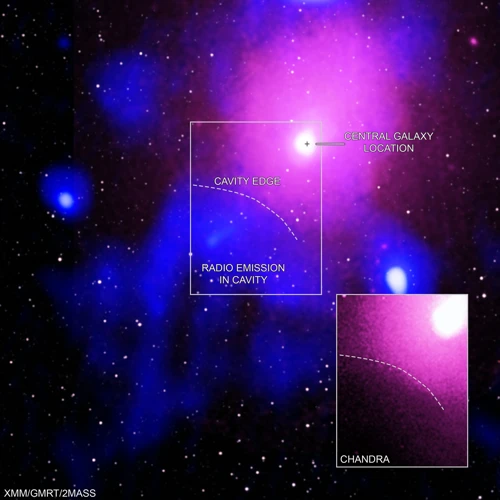
Scientifically, the existence and significance of Ophiuchus can be explained through various factors. The phenomenon known as the precession of the equinoxes plays a crucial role in understanding the position of Ophiuchus in relation to other constellations. The Earth’s axial precession causes a shift in the orientation of the Earth’s axis over a 26,000-year cycle. This shift affects the alignment of the Sun with the constellations and alters the position of the zodiac signs over time. Additionally, it is important to distinguish between the astronomical zodiac, which is based on the actual positions of the constellations in the sky, and the astrological zodiac, which is a symbolic representation divided into twelve equal signs. Ophiuchus, being an overlooked constellation in Western astrology, is not recognized in the astrological zodiac. However, in terms of astronomical facts, Ophiuchus holds its place in the celestial skies alongside other well-known constellations. To explore Ophiuchus’ relationship with other constellations and delve deeper into the scientific explanation behind its significance, continue reading our article “Ophiuchus: Zodiac Sign Origins and Significance in Astrology”.
Precession of the Equinoxes
The precession of the equinoxes is a natural astronomical phenomenon that plays a crucial role in understanding the relationship between the zodiac signs and the constellations. Essentially, it refers to the gradual shift in the Earth’s axis of rotation over a long period of time. This shift causes the position of the stars and constellations to change in relation to the Earth’s equator. As a result, the dates associated with each zodiac sign have shifted over the centuries. This phenomenon occurs due to the gravitational forces exerted by the Moon, Sun, and other celestial bodies on the Earth’s equatorial bulge. It takes approximately 26,000 years for the Earth to complete one full precessional cycle. This means that over time, the Earth’s axis points towards different parts of the sky, leading to changes in the alignment of the zodiac signs with the constellations. The precession of the equinoxes explains why the zodiac signs that were established thousands of years ago no longer correspond to the actual constellations in the sky. This misalignment has caused confusion and debate among astrologers and astronomers alike. It is important to differentiate between the astronomical zodiac, which is based on the position of the constellations, and the astrological zodiac, which is based on the divisions of the ecliptic. Understanding the precession of the equinoxes is crucial in debunking the myth that Ophiuchus has altered the dates of other zodiac signs.
Astronomical vs Astrological Zodiacs
The distinction between the astronomical and astrological zodiacs is an important one to understand when discussing Ophiuchus. The astronomical zodiac is based on the actual positions of constellations in the sky, while the astrological zodiac is a system that divides the ecliptic into twelve equal parts, each represented by a specific zodiac sign.
In the astronomical zodiac, Ophiuchus is indeed a constellation that lies along the ecliptic. However, due to the way the astrological zodiac was established thousands of years ago, Ophiuchus was not included as a zodiac sign in Western astrology. Instead, the twelve zodiac signs correspond to specific constellations that were visible at certain times of the year when the zodiac system was established.
It is important to note that the positions of constellations have shifted over time due to a phenomenon known as precession of the equinoxes. This means that the astrological signs no longer align with the constellations from which they took their names. This misalignment has led to debates and controversies surrounding Ophiuchus and its place within the astrological zodiac.
While Ophiuchus is not officially recognized in Western astrology, some astrologers have incorporated it into their practice, viewing it as a thirteenth zodiac sign. Sidereal astrologers, on the other hand, do recognize Ophiuchus as one of their zodiac signs.
The contrasting nature of the astronomical and astrological zodiacs can be somewhat confusing, especially considering the widespread popularity and influence of Western astrology. It is crucial to distinguish between the two systems when discussing Ophiuchus and its relationship to the zodiac signs. Ultimately, whether Ophiuchus is considered a part of the zodiac depends on the astrological framework being applied.
Ophiuchus as an overlooked constellation
Ophiuchus, despite its distinct and intriguing qualities, has often been overlooked as a constellation in popular astrology. This oversight can be attributed to several factors. Firstly, the primary focus of Western astrology has traditionally been on the twelve zodiac signs, which are associated with specific dates and characteristics. Ophiuchus, being outside this well-established framework, does not fit neatly into the traditional system. The prominence of the zodiac signs in pop culture and horoscope columns has reinforced the perception that only these twelve signs are significant. Another factor contributing to the oversight is the historical association of Ophiuchus with sidereal astrology, which is less widely practiced and discussed compared to Western astrology. Sidereal astrology, which considers the actual positions of the constellations in the sky, acknowledges Ophiuchus as a zodiac sign. However, its lesser popularity and recognition have largely kept it on the periphery of mainstream astrological discussions.
It is important to note that, despite being overlooked, Ophiuchus has its own unique symbolism and characteristics. Represented by a man holding a serpent, the constellation embodies the archetype of a healer equipped with wisdom and intuition. This depiction aligns with the mythological figure of Asclepius, the Greek god of medicine and healing. Ophiuchus is said to possess traits such as courage, insight, and a deep connection to mystical knowledge. While Ophiuchus may not have received the same level of attention as the traditional zodiac signs, its significance in sidereal astrology and its rich symbolism make it an exciting constellation to explore and understand.
Understanding the Zodiac System
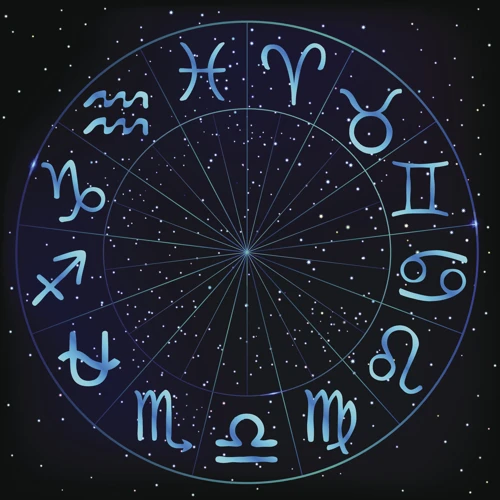
The zodiac system is a complex and fascinating concept that spans across different cultures and astrological practices. In Western astrology, the zodiac is divided into twelve signs, each representing specific traits, characteristics, and life experiences. These signs are based on the Earth’s orbit around the Sun, and their positions at the time of a person’s birth are believed to influence their personality and destiny. However, the Western zodiac is not the only system of its kind. The Chinese zodiac, for example, assigns animal symbols to each year in a twelve-year cycle, providing insight into a person’s character and compatibility. The Vedic zodiac, used in Hindu astrology, aligns with the constellations in the sidereal zodiac and places great emphasis on individual life paths. Additionally, the Sidereal zodiac takes into account the procession of the equinoxes and adjusts the zodiac signs accordingly. Understanding the different zodiac systems allows us to appreciate the richness and diversity of astrological beliefs and interpretations around the world.
The Western Zodiac
The Western Zodiac, also known as the Tropical Zodiac, is the most well-known and widely used zodiac system in Western astrology. It consists of twelve signs, each representing a specific period of the year based on the Earth’s position in relation to the Sun. The Western Zodiac originated from ancient Greece and Rome, where it was believed that the positions of the planets and stars at the time of a person’s birth could influence their character and destiny. The twelve signs of the Western Zodiac are Aries, Taurus, Gemini, Cancer, Leo, Virgo, Libra, Scorpio, Sagittarius, Capricorn, Aquarius, and Pisces. Each sign is associated with certain personality traits and characteristics. According to the Western Zodiac, a person’s zodiac sign is determined by their birth date, with each sign spanning approximately 30 degrees of the zodiac circle. This zodiac system is based on the concept of the Sun’s apparent path across the sky throughout the year, known as the ecliptic. The Western Zodiac is widely used for horoscopes, compatibility analysis, and astrological predictions in Western cultures. It is important to note that Ophiuchus is not included in the Western Zodiac system, despite recent discussions and controversies surrounding its inclusion.
The Chinese Zodiac
The Chinese Zodiac, also known as Shengxiao, is a twelve-year cycle where each year is associated with an animal sign. Unlike the Western zodiac, which is based on the position of the sun, the Chinese zodiac is determined by the lunar calendar. The twelve animal signs in the Chinese zodiac include the Rat, Ox, Tiger, Rabbit, Dragon, Snake, Horse, Sheep, Monkey, Rooster, Dog, and Pig. Each animal is believed to have certain characteristics and personality traits that are said to influence an individual’s life and destiny. The Chinese zodiac is deeply rooted in Chinese culture and is used to determine compatibility between individuals, forecast horoscopes, and make important life decisions. It is important to note that the Chinese zodiac and the Western zodiac are distinct systems that operate on different principles. While the Western zodiac assigns signs based on the month of birth, the Chinese zodiac places importance on the year in which a person is born. Understanding the Chinese zodiac can provide valuable insight into Chinese culture, beliefs, and traditions.
The Vedic Zodiac
The Vedic Zodiac, also known as the Jyotish or Hindu Zodiac, is an ancient astrological system that originated in the Indian subcontinent. Unlike the Western Zodiac, which bases its divisions on the seasons, the Vedic Zodiac is based on the actual positions of the stars and planets in the sky. The Vedic Zodiac consists of twelve signs, known as Rashis, including Aries, Taurus, Gemini, Cancer, Leo, Virgo, Libra, Scorpio, Sagittarius, Capricorn, Aquarius, and Pisces. However, the Vedic Zodiac does not align with the Western Zodiac in terms of dates. In the Vedic system, the zodiac signs are determined by the position of the Moon at the time of a person’s birth. The Moon’s placement in a specific sign is believed to influence a person’s emotions, behaviors, and personality traits. The Vedic Zodiac also takes into account the concept of Nakshatras, which are lunar mansions or star clusters that divide each zodiac sign into smaller segments. Each Nakshatra is associated with specific characteristics and influences. The Vedic Zodiac is deeply rooted in ancient Indian culture and is widely used in Vedic astrology to provide insight into various aspects of a person’s life, including marriage, career, health, and spirituality. It offers a unique perspective on astrology, emphasizing the importance of celestial bodies and their effects on human existence.
The Sidereal Zodiac
The Sidereal Zodiac is a zodiac system that is primarily used in Vedic astrology, which originated in ancient India. Unlike the Western tropical zodiac, which is based on the seasons and the position of the Sun at the time of the vernal equinox, the Sidereal Zodiac is based on the actual positions of constellations in the sky. In the Sidereal Zodiac, the zodiac signs are aligned with their corresponding constellations. This means that the starting point of the zodiac is the fixed star called Spica, which is located in the constellation of Virgo. Each zodiac sign occupies a specific 30-degree segment of the ecliptic, and the Sidereal Zodiac takes into account the precession of the equinoxes, which causes a gradual shift in the positions of the constellations over time. This means that the dates associated with the Sidereal Zodiac may differ from those of the Western tropical zodiac. The Sidereal Zodiac is considered by many Vedic astrologers to provide a more accurate and precise system for making predictions and interpreting celestial influences. It takes into account the fixed stars and their impact on an individual’s birth chart, offering a deeper and more nuanced understanding of astrological influences.
Why People Believe in Ophiuchus
There are several reasons why people believe in Ophiuchus and are intrigued by its existence.
1. Discovering the unknown: Ophiuchus represents a sense of mystery and curiosity for those who want to explore beyond the traditional twelve zodiac signs. Many individuals are drawn to the idea of uncovering hidden knowledge and expanding their understanding of astrology.
2. Personal identification: Some people resonate with the traits and characteristics associated with Ophiuchus. Whether it’s the archetype of the healer or the symbolism of transformation, individuals may find a sense of connection to this lesser-known zodiac sign and see themselves reflected in its symbolism.
3. Seeking uniqueness: The concept of Ophiuchus offers individuals the opportunity to embrace their individuality and stand out from the crowd. In a world where everyone seems to fit into one of the twelve traditional zodiac signs, Ophiuchus allows for a sense of distinction and a chance to explore a different astrological identity.
4. Exploring alternative belief systems: Embracing Ophiuchus can be seen as a rejection of traditional astrology and a desire to explore different perspectives. Some individuals turn to sidereal astrology or Vedic astrology, which incorporate Ophiuchus as a zodiac sign, to gain a fresh understanding of themselves and their astrological journey.
5. Popular culture influence: The topic of Ophiuchus has gained momentum in recent years through social media, online discussions, and even pop culture references. This increased exposure and the allure of something unconventional have contributed to the belief and fascination surrounding Ophiuchus.
While Ophiuchus may not be officially recognized in Western astrology, the reasons why people believe in it are deeply rooted in personal experiences, a thirst for discovery, and the desire to break away from traditional systems. Whether one chooses to incorporate Ophiuchus into their astrological beliefs or not, it’s important to approach astrology with an open mind and respect for the diverse perspectives that exist within this field.
Conclusion
In conclusion, Ophiuchus remains an intriguing and controversial subject within the realm of astrology. While it is not officially recognized as a zodiac sign in Western astrology, its presence is acknowledged in sidereal astrology and Hindu astrology. The constellation of Ophiuchus, representing the figure of the Serpent Bearer, holds a rich mythological and historical significance. Understanding the relationship between Ophiuchus and the other constellations in the zodiac belt helps to dispel common myths and misconceptions surrounding its status as a new zodiac sign or its supposed influence on horoscopes and predictions. Through a scientific lens, Ophiuchus is perceived as an overlooked constellation due to the precession of the equinoxes. Despite its lesser-known status, Ophiuchus has captured the curiosity of many, with its enigma giving birth to tales of unique personality traits and traits. Whether one chooses to embrace Ophiuchus as a zodiac sign or dismiss it as an astrological curiosity, its allure continues to fascinate astrology enthusiasts and sky gazers alike. As the celestial dance of the zodiac continues, Ophiuchus remains an intriguing character in the vast tapestry of the cosmos.
Frequently Asked Questions
FAQ 1: Is Ophiuchus a new zodiac sign?
No, Ophiuchus is not a new zodiac sign. While it may not be officially recognized in Western astrology, it has been acknowledged in sidereal astrology and Hindu astrology for centuries.
FAQ 2: Does Ophiuchus change the dates of other zodiac signs?
No, Ophiuchus does not change the dates of other zodiac signs. The twelve traditional zodiac signs span specific dates and are based on the division of the ecliptic, not influenced by the presence of Ophiuchus in the sky.
FAQ 3: Does Ophiuchus have special traits and personality characteristics?
Ophiuchus is often associated with special traits and personality characteristics in astrology. However, these interpretations vary, and it is important to note that their significance differs between Western astrology and sidereal astrology.
FAQ 4: Does Ophiuchus affect horoscopes and astrology predictions?
In Western astrology, Ophiuchus is not considered in the calculation of horoscopes and astrology predictions. However, in sidereal astrology, it may have some influence on these interpretations.
FAQ 5: Where does Ophiuchus fall in the zodiac belt?
Ophiuchus lies between Scorpio and Sagittarius in the zodiac belt, extending over a portion of the ecliptic.
FAQ 6: What does the Ophiuchus constellation represent?
The Ophiuchus constellation represents the figure of Asclepius, the ancient Greek god of medicine and healing. It is depicted as a man holding a serpent.
FAQ 7: How does Ophiuchus relate to other constellations?
Ophiuchus is in proximity to the constellations of Scorpio and Sagittarius, often appearing intertwined with them in the night sky.
FAQ 8: What is the Precession of the Equinoxes?
The Precession of the Equinoxes is the gradual shift in the orientation of Earth’s axis, resulting in a change in the position of the equinoxes over time. This phenomenon accounts for the slight variation in zodiacal positions.
FAQ 9: How do astronomical and astrological zodiacs differ?
Astronomical zodiacs are based on the position of constellations in the sky, while astrological zodiacs focus on the divisions of the ecliptic and the interpretation of their influence on human affairs.
FAQ 10: Why do people believe in Ophiuchus?
People are drawn to the mystery and intrigue of Ophiuchus, seeking to explore its potential impact on astrology and uncover its unique attributes. The fascination with Ophiuchus stems from a desire to understand the heavens and our place within the celestial realm.








